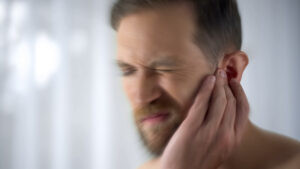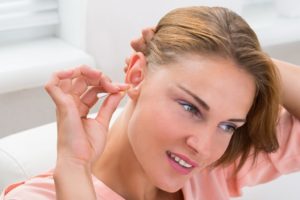Google is moving outside the realm of internet based technologies to real hardware with their new project “Google Glass”.
Watch this great video about the new Google Glass before reading this blog!
This technology is a fusion of smartphone technology, voice activation, and a set of non prescription glasses. Essentially, the wearer can record what they are seeing through voice activation, have map routes superimposed on their field of vision, browse the internet through touch controls and have live video chats in the corner of the glasses lens. Earlier this month, an FCC filing revealed that Google Glass will be including bone conduction integrated into the technology! Few details have been released about the applications of this feature, but the potential for the hearing industry is incredible.
Some people are unable to wear hearing aids and depend on using devices that send vibrations through the bones in your skull. Bone anchored hearing aids involve surgery and can be a messy procedure. Could the Google Glass replace this one day? Could the technology be adapted to current hearing aids?
- Consider how it could be built in to a sensory experience where the glasses present clients with visual indicators for both old and new forms of hearing technology?
- How about a display that shows the loudness of incoming sounds superimposed over an audiogram?
A way of showing people with hearing impairment the exact range of sounds they are missing.
- How about coupling visual indicators with the Google Glass to improve use of stethoscopes with the hearing impaired?
- What about a visual read out of your hearing aid performance?
Meaning the glasses will tell you when your hearing aids kick in to directional mode, and give a live read out of battery capacity and environmental sound input. Visual reinforcement could revolutionize the hearing aid experience for new users learning the technology.
Just think of the cosmetic appeal. If you look at how glasses and hearing devices have changed in the last 100 years the difference is incredible. The key difference is that vision impairment has become fashionable, and hearing aids have not. As integrative technology transcends into the hearing business, we can start to dispel the negative image of hearing devices. I would love to see a paradigm shift where hearing properly was cool, and the devices themselves were viewed as an innovative piece of technology.
Although my thoughts on this matter are pure speculation, the next 20 years of technological development will drastically change the face of our industry, and I see Google Glass as a revolutionary next step. There is already a multitude of industry related smartphone applications, and now we have potential for direct sensory integration to these applications.
We live in an exciting time where imagination can become reality, and I am thrilled to be part of it.


















Comment faire
26 novembre, 2020
Hearing Aids and the Pandemic
One of the odd side effects of the Pandemic involves masks and their relationship with hearing aids. Both are fighting […]
By Eric McKeown
Comment faire
12 décembre, 2018
Micro-electronics Don’t Like The Cold!
Micro-electronics like cell phones and hearing devices really don’t like cold temperatures. If they’re exposed to cooler temperatures for too […]
By Nadia Tymczyszyn
Comment faire
26 avril, 2018
Potassium Helps Us Hear, So Let’s Go Bananas!
A cleverly titled article recently caught my attention. Catherine Heuzenroeder from ABC Australia recently posted an article called “Let’s Go […]
By Eric McKeown
Comment faire
21 juin, 2016
Our Youth Have Found A New Bad Habit
Our children’s ears are starting to ring and it’s not because their parents are talking about them. It seems as […]
By Eric McKeown